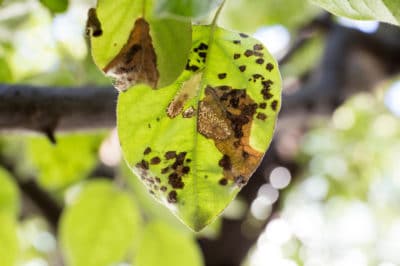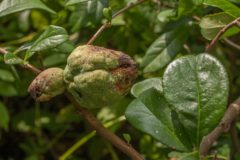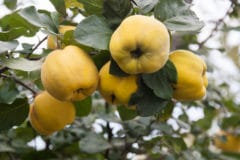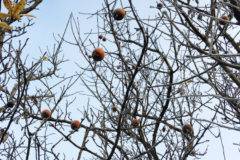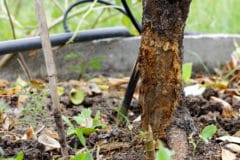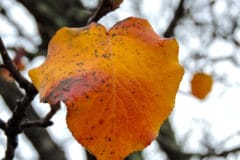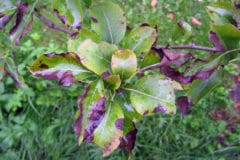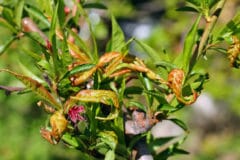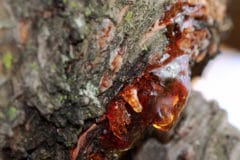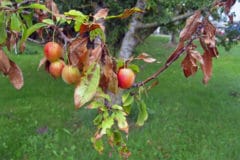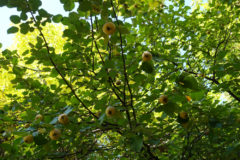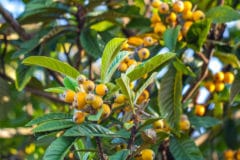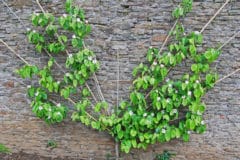Quince Tree Diseases
The quince tree diseases you’re most likely to encounter include:
Fire Blight
During warm, wet springs, fire blight bacteria ooze from bark cankers on an infected quince tree and spread via rain or insects to the new leaves and flowers. The stricken tissues wilt and blacken so the whole tree looks charred.
Fire Blight Prevention
To prevent a recurrence, prune the cankered tissue back to healthy wood. Then spray with organic copper during winter dormancy and just before the buds break every year until you break the cycle.
Cedar-Quince Rust
Any quince tree growing near a cedar or juniper risks rust infection. The disease travels from spore-filled galls on those trees to quinces, where it distorts the leaves, flower buds and fruit. When ripe, infected fruit is covered with tiny cups of orange spores.
Rust Treatment
Your only treatment option is to remove the infected branches, twigs, leaf stalks and fruit. Prevention requires spraying with organic sulfur in spring, when the local cedars and junipers are infectious. Because rust spores migrate up to 2 miles, spraying isn’t a surefire fix.
Quince Tree Pests
Pests aren’t a big quince tree problem, but regular examination of the leaves may uncover:
- Aphids: Tiny, pear-shaped aphids latch onto flower and leaf buds to drain sap and cover their feeding sides in sticky, clear goo called honeydew. Ants streaming to the honeydew reveal an aphid infestation. Blast the tree with your garden hose each day until the aphids are gone and deter the ants by wrapping a piece of heavy paper coated with petroleum jelly around the trunk
- Scale: Clusters of tiny, brown or purplish bumps on a quince tree’s branches are soft-bodied scale insects hiding under hard shells. Like aphids, they drain sap and excrete honeydew. Spray them with organic neem oil for quick control.
- Codling moth caterpillars: These caterpillars burrow into quince fruit, eat their way out, and spin cocoons under loose bark or on the ground beneath the tree. They emerge as adult moths to deposit their own eggs on the fruit and repeat the cycle.
Controlling Codling Moths
To keep moths and caterpillars off your quince fruit, bag it about one month after flowering. Then spray the tree’s trunk and branches with organic pyrethrum to kill moths beneath the bark. Remove the bags a few days before harvesting.
